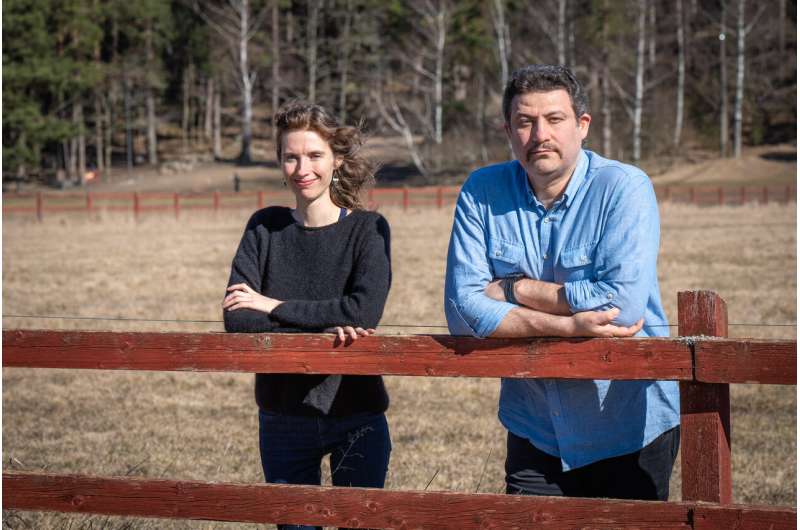Biogas from excrement to reduce environmental impact

Coordinated management of excrement from animals and humans could save nearly EUR 100 million each year. The key is to produce the biogas from the excrement before it is used as fertilizer. In addition, Sweden could reduce its greenhouse gas emissions by around 1.5 million tons of carbon dioxide per year. These are the results from a new study published by researchers at Linköping University in Resources, Conservation & Recycling: X.
Plants need nutrients, such as nitrogen, phosphorus and potassium, to grow. Agriculture uses animal manure and chemical fertilizers to increase crop growth. Animal manure contains the necessary nutrients, but it is expensive to transport the heavy and bulky manure from where it is produced to where it is needed. This means that it is often cheaper to use mineral or artificial fertilizer, which are often made by using fossil fuels and contribute to greenhouse gas emissions.
Researchers at Linköping University have now shown that if animal and human excreta are used as feedstock for biogas plants and the digestate then reapplied as a fertilizer where it is needed, it would save nearly EUR 100 million a year, and reduce Sweden's annual emissions by the equivalent of 1.5 million tons of carbon dioxide. However, this requires logistical coordination on a national level to select the locations of biogas plants and the most efficient transport pathways to and from these locations.
"If you produce biogas from the excrement before it is used as fertilizer, the advantages can outweigh the costs of transport. In this case we can maximize the benefit of an existing resource by also using the energy in the manure that is otherwise lost," says Geneviève Metson, senior lecturer in the Department of Physics, Chemistry and Biology at Linköping University.
The research group has calculated that 238 biogas producing locations, strategically positioned throughout Sweden, would be needed to optimize the use of both animal and human waste matter. The excrement from animals and humans contains also a large amount of energy that can be recovered in a biogas facility and used as renewable transportation fuel, for example. The amount of energy in all the excrement produced by animals and humans amouts to 3.4 TWh, which is enough to power 500,000 biogas-fuelled cars for a year.
Roozbeh Feiz, research fellow in the Department of Management and Engineering at Linköping University, points out that the government, the agricultural industry and biogas producers must all work together.
"Without coordination, the effects will not be anything like as large. Our calculations are, of course, theoretical, but we have shown that the advantages of using biogas as an intermediate stage make this a credible solution. Biogas production not only preserves the nutrients, but also generates renewable energy, and therefore has the potential to enhance the sustainability of agriculture as well as the transport sector," says Roozbeh Feiz.
The research group collects broad expertise within such fields as theoretical biology, environmental technology and applied maths. By using mathematical optimisation combined with life-cycle analysis, the researchers have shown that both emissions of greenhouse gases and the costs of, for example, mineral fertilizer and transport can be significantly reduced. Their results have been published in the online journal Resources, Conservation & Recycling: X.
"There are many barriers to overcome before full organic resource recovery and reuse becomes a reality. Besides the need for a national coordination, the legal, ethical and cultural caveats of using human excrement as a fertilizer need to be put aside. This is a necessary measure for a more circular and sustainable food production," says Geneviève Metson.
The research has been financed by Formas and the Biogas Research Center at Linköping University.
Facts: The total emissions from Swedish agriculture in 2019 were equivalent to approximately 7 million tons of carbon dioxide, according to the Swedish Environmental Protection Agency. As a whole, Sweden's greenhouse gas emissions were approximately 51 million tons of carbon dioxide in 2019.
More information: Geneviève S. Metson et al. Optimizing transport to maximize nutrient recycling and green energy recovery, Resources, Conservation & Recycling: X (2021). DOI: 10.1016/j.rcrx.2021.100049

















